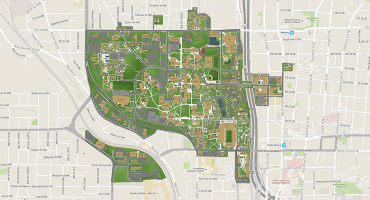Below are some of the exciting projects currently underway at the Center for Advanced Brain Imaging (CABI)
Dulas & Duarte, 2014
Not all of what we experience is consciously remembered. We might remember the level of the parking lot but not the space number where we parked the car this morning. We remember fewer of these kinds of details as we age. Little is known about the neural mechanisms that support our ability to remember some aspects of previously experienced events but not others or why we forget more memory details as we get older. In a recent study from our lab, we measured young and older adults’ brain activity in an MRI machine while they learned and later remembered pictures. We directed them to pay attention to some of the details of the pictures to determine how attention affects memory and the brain systems that support memory.
Our results show that young and older adults are able to pay attention to and remember the important details of events but older adults are slightly less likely to remember these details. Attention increased the amount of activity in the hippocampus, suggesting that only the details that people paid attention to were bound into memory. Older adults showed more activity in the medial prefrontal cortex compared to young adults. This suggests that older adults may be less able to remember important event details because they fail to ignore irrelevant thoughts and feelings that are not directly related to what they are being asked to remember.
Bezdek, Gerrig, Wenzel, Shin, Revill, & Schumacher, 2015
Many people report feeling “lost” in a good film or book. In the psychological literature, this phenomenon is called narrative transportation, and one component of it involves engaging attention to the narrative world and disengaging attention to the physical environment beyond the screen. In our study, we tested the hypothesis that suspense would narrow viewers’ attention to the narrative action. Participants lay in an MRI machine and watched scenes from 10 suspenseful movies, including Alfred Hitchcock’s “North by Northwest” and “The Man Who Knew Too Much,” as well as “Alien” and “Misery.” As the movies played in the center of the screen, a flashing checkerboard pattern appeared around the edges. We had another set of participants rate the level of suspense in the films using a joystick slider, so we knew when suspense was rising and falling.
Our fMRI results provided striking evidence in favor of the attention-narrowing hypothesis: at moments of increasing suspense, the part of primary visual cortex that processes the periphery decreased in activity. The part that processes the center of the visual field, where the movies were played, increased in activity. Across the brain, suspense ramped up activity in brain networks that direct attention to engaging stimuli. Suspense ramped down activity in the “default-mode” brain network, which is associated with internally focused tasks, such as mind wandering. These results reveal how narrative suspense can narrow visual processing on a moment-by-moment basis.

Figure Caption (Bezdek, Gerrig, Wenzel, Shin, Revill, & Schumacher 2015)
A) Brain areas that show increased (warm colors) or decreased (cool colors) activity as the level of suspense increased in film excerpts. Areas outlined in green process the center of the visual field; areas outlined in red process the visual periphery. B) Suspense reduced the response from peripheral processing regions and increased the response from central processing regions, supporting our hypothesis that suspense narrows attention.
Wheeler, 2015
Neural mechanisms of age-related changes in perceptual and memory decision-making
In this project, funded by the National Science Foundation, the Wheeler Lab will use magnetic resonance imaging in a series of experiments to study neural mechanisms of decision making in healthy aging. Perceptual decision-making occurs in a series of stages with separate and identifiable neural stages of information processing, including sensory analysis (See Figure), evidence accumulation, and the commitment to a choice. The experiments in this project will test the degree to which these dissociable neural signals account for memory decisions, and identify whether they can also account for age-related changes in decision making. For example, when forming a decision, healthy older adults are typically more conservative than is optimal, and are less able and/or less willing than younger adults to adapt their decision strategies under changing conditions. Consequently, older adults can have difficulty making decisions in new situations. By investigating changes in neural activity as decisions develop in time, this project will identify which neural processes are most important in reaching a decision, and which change the most as we age. Such knowledge will be useful in the development of strategies or methods to improve decision-making abilities in later years.

Figure Caption (Wheeler 2015)
From our first study published in this area, the figure shows brain regions that were involved in sensory analysis (red), evidence accumulation (blue) and the commitment to a decision (green) during perception. During the task, subjects watched as pictures of objects were revealed under a noisy mask, and pressed a button when they could recognize the object. TR = recognition time (sec).


